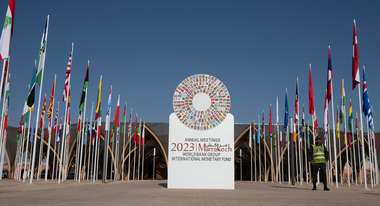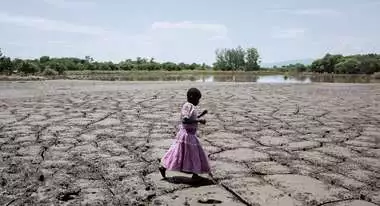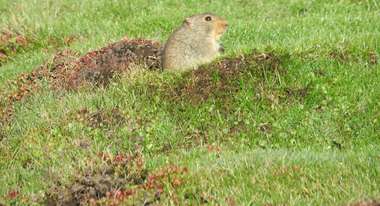Functioning soil is the basis for sustainable wastewater irrigation
Competition for water resources requires the use of wastewater for agriculture. In this context, functioning soil is a prerequisite for healthy plants and people to which little attention paid.
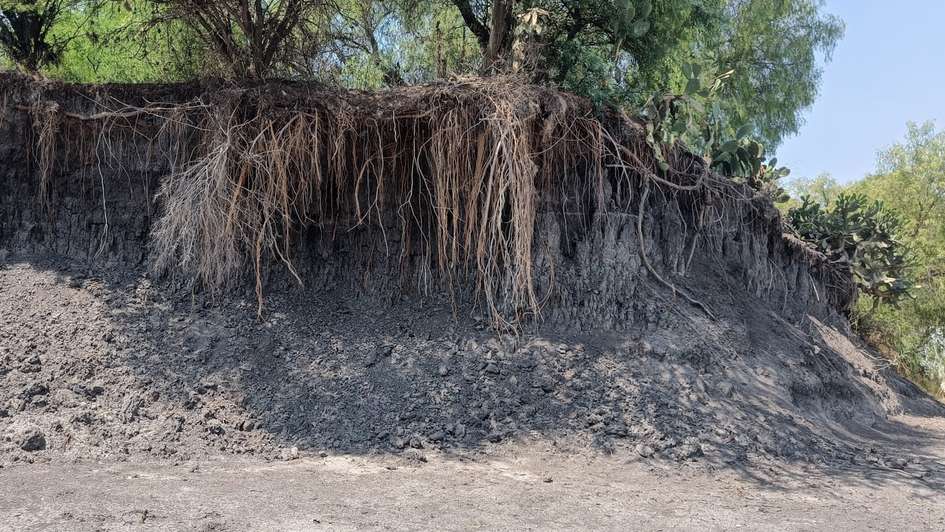
The world’s growing population is keeping up the pressure to increase agricultural productivity in order to meet the rising demand for food. Particularly the urban population is rising fast, while rural areas are depopulating. Since the 1960’s the green revolution has helped to overcome food shortages by increasing fertilizer use, developing high yield crop varieties and promoting pesticides to protect crops from weeds and pests. In addition, irrigation has expanded, particularly in semiarid and arid regions. However, expanding cities are increasingly competing with the agricultural sector for water, jeopardizing agricultural productivity. The per capita water availability has diminished globally by 20% in the last two decades, and in Northern Africa and Western Asia water scarcity increased even by up to 30% [1]. Climate change is posing additional threats: semiarid and arid regions are the first to suffer from water scarcity.
This water shortage has enhanced the need to optimize the use of water resources by exchanging potable water for wastewater, treated or untreated, to allow agricultural production to continue or even increase. Since the agricultural sector consumes more than 70% of global fresh water resources [1], the use of wastewater and storm water for irrigation is becoming imperative.
Wastewater Reuse for Irrigation – a Global Trend
Wastewater irrigation is performed in many regions all over the world, either planned or unplanned, i.e. by irrigation with polluted river water. Beyond boosting agricultural productivity, it has several additional advantages. The availability of potable water is optimized, because competition between cities and agriculture for high quality water is reduced and groundwater recharge is increased. The costs for treatment of wastewater are reduced, since water used for irrigation should still contain nutrients and organic matter, while these compounds have to be removed from water discharged into surface water bodies to avoid eutrophication and hypoxia. The recycling of nutrients contained in wastewater for fertilization and the prevention of direct discharge of wastewater into rivers mitigates the eutrophication of surface waters and coastal areas. Moreover, the reuse of wastewater for irrigation stabilizes landscapes by providing vegetation cover all year round.
However, these benefits must be weighed against risks to human and environmental health. Wastewater can contain pathogens that are potentially transferable to humans and animals and bacteria carrying antibiotic resistance genes often linked to mobile genetic elements. The microbiome of wastewater and its resistome depend on the presence of hospitals, food or pharmaceutical industry in the catchment. In addition, wastewater irrigation can introduce salts, toxic metals, pharmaceutical residues and other pollutants into soils, crops and groundwater.
Hence, a sustainable use of wastewater for irrigation in agriculture must reduce risks for human and environmental health to acceptable limits, while keeping the benefits as high as possible. To date, numerous guidelines for the safe use of wastewater have been established and are continuously being developed [2] to achieve a good tradeoff between risks and benefits. These measures include water treatment, crop restrictions, irrigation restrictions such as minimum periods of time between the last irrigation and harvest, hygienic practices at food markets and during food preparation, use of personal protective equipment and many others. However, the role of soils and their functions in minimizing risks and realizing benefits is less often addressed.
Relevance of Soils and their Functions
Urbanization not only implies a mounting demand for water, it also often occurs on the most fertile soils, for example in plain areas close to surface water sources. Currently 2.7% of terrestrial land globally is urbanized. This seems to be almost negligible, but regionally, these figures change: for example, in the Valley of Mexico more than 60% of fertile agricultural land and 20% of soil contributing to groundwater recharge have been sealed in the last 70 years due to the growth of Mexico City. However, only unsealed soils can fulfill their crucial functions such as
- providing food and other resources for a bio-based economy,
- providing a habitat for numerous organisms and,
- regulating the cycling of nutrients, carbon and water between atmosphere, biosphere and underground. This includes their function as a sink of atmospheric greenhouse gases, the filtering and purification of water and the detoxification of harmful substances.
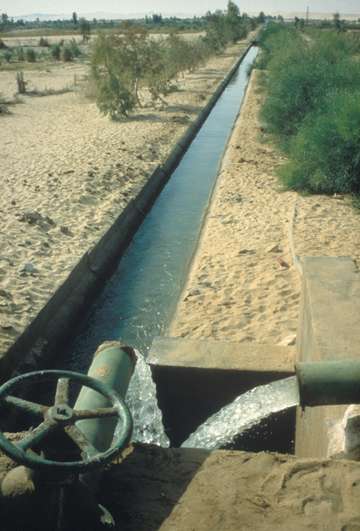
Irrigation can promote these soil functions. First, the supply of water as well as nutrients, especially nitrogen and phosphorus, boosts crop yields often by one order of magnitude while reducing eutrophication of surface waters, CO2 emissions from fertilizer production and limiting the use of fossil phosphate deposits. It was estimated that the nutrients contained in wastewater could potentially offset 13% of the global agricultural demand for nitrogen, phosphorus and potassium fertilizers [3]. In addition, irrigation might also allow growing crops with high nutritional and market value, such as fresh produce, improving the nutrition of people in urban agglomerations and the income of periurban farmers. However, nitrogen inputs into soils can also trigger emissions of the greenhouse gas dinitrogen oxide (N2O).
Higher yields also imply an increasing return of plant residues to soil, which together with the organic matter added with wastewater lead to a gradual accumulation of soil organic matter (“humus”) in irrigated soils. Wastewater irrigated soils therefore can act as a sink for atmospheric CO2 contributing to mitigating greenhouse gas emissions and global climate change. On top of being a carbon sink, this build-up of soil organic matter stocks improves the water retention in soils, the structure and hydraulic conductivity of soils, as well as their function as filter and buffer of pollutant inputs, reducing pollutant transfers to crops and groundwater. As an example, sandy soils with typically low water retention, filter and buffer capacity can benefit from this increase in organic matter stocks.
Increasing inputs of plant residues and accumulation of organic matter also promote the habitat function of soils, increased biological activity, which in turn supports the degradation and detoxification of organic pollutants. In the sense that soils act as biological filters, an active soil microbial community can also outcompete bacteria supplied with wastewater, eliminating wastewater-borne bacteria. In summary, soils and their functions are essential for the sustainable reuse of wastewater for irrigation. So how can these functions be maintained, protected or even enhanced?
Safeguarding and enhancing soil functions in wastewater irrigation systems
Although soils are amazing filters and buffers for chemical and biological pollutants, their filter and buffer capacities are limited and closely related to their properties. Hence, it is of utmost importance for sustainable wastewater irrigation to avoid an “overloading” of soils with pollutants beyond their filter and buffer capacity. Separating wastewater streams for a targeted treatment and reuse close to their source allows for an easier control of the amounts of pollutants introduced into wastewater-irrigated soils, keeping the load within safe limits. This includes the separate collection and treatment of wastewater streams of hospitals, industries, households and runoff. The separation of wastewater streams is difficult to achieve in established sewer systems. However, the separation of such streams should be the goal for newly planned water infrastructure to achieve sustainable development goal (SDG) 6 “Clean Water and Sanitation”. This separation would then contribute significantly to achieving SDGs 2 “Zero Hunger”, 11 “Sustainable Cities & Communities” and 12 “Sustainable Consumption and Production”.
However, even wastewater streams with low concentrations of pollutants such as domestic wastewater are typically enriched with soluble salts and detergents. The accumulation of these compounds in irrigated soil can harm plants and deteriorate the structure and pore system of soil that is essential for its functioning.
Fortunately, a lot of experience has been gained already on monitoring salt contents in irrigation water and soils by using simple measurements and reducing its accumulation by adding proper amounts of water to ensure a sufficient soil drainage. The accumulation of salts in irrigated soil can also be prevented by limiting the addition of excessive amounts of salt during wastewater treatment or by storing water in open ponds only for short periods of time to avoid high salt concentration due to evaporation.
The accumulation of salts typically leads to an alkalinization of soils that impedes cropping and soil biota. On the other hand, wastewater irrigated soils may also acidify, e.g. as a consequence of inputs of large amounts of ammonium or urea. Depending on its degree, acidification will trigger the mobilization of toxic metals like cadmium or lead in soils and their subsequent transfer to crops and groundwater. Moreover, acidification affects soil bacteria responsible for the cycling of nutrients and breakdown of organic pollutants. Hence, the monitoring of soil pH and its adjustment by additions of, for example, lime to counteract acidification are crucial for maintaining and promoting soil functioning in wastewater irrigation systems.
Because of its importance for soil functioning, soil organic matter must be maintained. Declining soil organic matter stocks not only imply a net emission of the greenhouse gas CO2, but also a potential release of pollutants that were immobilized and accumulated in soils in the past. Hence, monitoring soil organic matter stocks using simple methods like weight loss on ignition and counteracting losses by increasing the return of crop residues to soil or by addition of organic fertilizers is imperative for sustaining the filtering and buffering of pollutants and the sequestration of atmospheric CO2 in soils.
Strengthening Soils in the Water-(energy)-Food Security-Nexus
The re-use of wastewater or polluted surface water for irrigation in urban and periurban agriculture is widespread and will likely increase as a consequence of the combination of population growth, urbanization and climate change. Soil monitoring and management is a crucial, but less recognized, pillar for leveraging the potential of wastewater irrigation
- to improve people´s nutrition,
- mitigating water shortages,
- reducing downstream environmental problems such as eutrophication,
- enhancing the recycling of nutrients,
- sequestering atmospheric CO2, and
- stabilizing landscapes against erosion,
- while keeping health and environmental risks within acceptable limits.
Soils and the maintenance of soil functions need to be factored into the water / food security nexus as a valuable resource for sustainable development. Healthy soils are needed to produce healthy plants for healthy people [4].


Co-Authors: Benjamin Heyde and Ines Mulder, Department of Soil Science and Soil Conservation, Justus-Liebig-University Giessen; Elisabeth Grohmann and Leila Soufi, Life Sciences und Technologie, Berlin University of Applied Sciences; Sara Gallego and Kornelia Smalla, Institute for Epidemiology and Pathogen Diagnostics, Federal Research Centre for Cultivated Plants, Quedlinburg; Blanca Prado, Instituto de Geología, Universidad Nacional Autónoma de México.
This article was written with support from Universidad Nacional Autónoma de México and the German Research Foundation as part of the projects „Respuesta de las interacciones entre contaminantes, nutrientes y microorganismos al tratamiento del agua en los suelos del Valle del Mezquital y su efecto en la dispersión de multidrogoresistencia” (Project No. PAPIIT-DGAPA AG101221) and Research Group FOR 5095 „Interaktionen von Schadstoffen, Antibiotikaresistenz und Pathogenen in einem sich ändernden Abwasserbewässerungssystem“ ("Interaction of pollutants, antibiotics resistance and pathogens in a dynamic system of wastewater irrigation" - Project No. 431531292, https://gepris.dfg.de/gepris/projekt/431531292).
References:
[1] Food and Agricultural Organization of the United Nations. 2020. The State of Food and Agriculture 2020. Overcoming water challenges in agriculture. Rome. https://doi.org/10.4060/cb1447en
[2] World Health Organization & United Nations Environment Program, 2006. WHO guidelines for the safe use of wastewater, excreta and greywater – Volume 2. ISBN 92 4 154683 2; https://www.who.int/publications/i/item/9241546832
[3] Quadir M, P Drechsel, BJ Jiménez Cisneros, Y Kim, A Pramanik, P Mehta, O Olyniyan, 2020. Global and regional potential of wastewater as a water, nutrient and energy source. Natural Resources Forum 444, 40-51. https://doi.org/10.1111/1477-8947.12187
[4] Hirt H, 2020. Healthy soils for healthy plants for healthy humans. Embo Reports 21, e51069. doi.org/10.15252/embr.202051069
